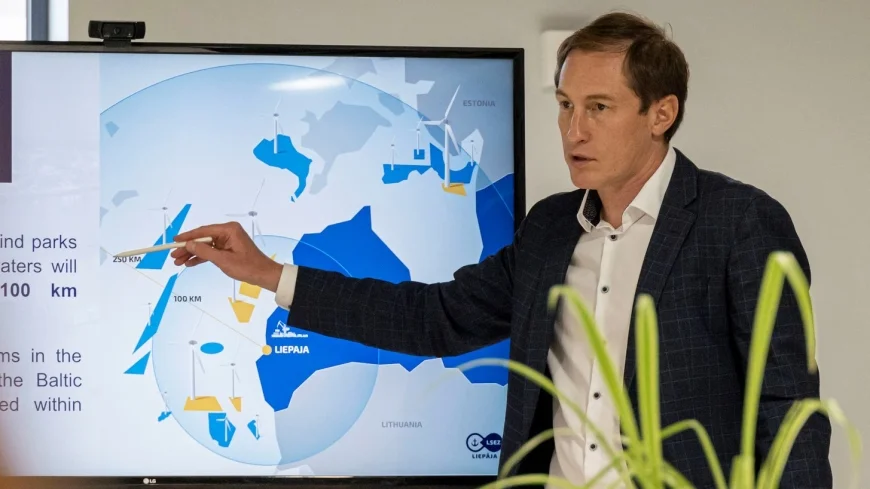Seminar on the entrepreneurship potential of the Latvian offshore wind energy
As determined by the spatial planning of the Baltic Sea, five potential locations of wind farms have been marked in the territorial waters of Latvia, all of which are located within a 100 km radius from Liepaja, whereas within a 250 km radius all wind farms of the Baltic States have been planned.
Uldis Hmieļevskis shared: the Liepaja SEZ Authority has been attempting for a long time to achieve the set goal and to become the center of the wind energy industry in the eastern part of the Baltic Sea. Currently, none of the ports on the eastern coast of the Baltic Sea have suitable infrastructure - at least 15-20 hectares of the territory with two 200 m long berths with high load-bearing capacity. Thus, it is important that the infrastructure of the Latvian ports is used for the implementation of the Latvian projects, and in our opinion, Liepaja has all the potential to create it - both free territories in the inner port area and appropriate geotechnical indicators of the soil, which allow for ensuring the necessary load-bearing capacity. Hence, we have elaborated the development concept of the Port of Liepaja, aiming at the construction of infrastructure on an area of 39 ha in the 1st phase. The technical solution of the project has already been developed, the necessary investment sources have been identified, a roadmap and timetable for the implementation of the project has been developed - implementation of such a project would require four years, which is in line with the planned timetables for the construction of offshore wind energy parks, which are planned in the region, even providing a certain time reserve."
At the end of the seminar, managers of the LIAA ELWIND project presented the opportunities of the Latvian offshore wind energy value chain, the current status of the ELWIND project and the planned purchases.
Latvia is in a unique position due to its geographical location - being in the midst of the Baltic Sea with strong prevailing winds and a relatively shallow seabed. Latvia's offshore wind energy potential is ~ 15GW, which is the largest among our neighboring countries. In the existing spatial planning of the Baltic Sea, five areas have been allocated for the development of offshore wind farms, and new development areas may also appear in the future. What does such a potential mean for the local economy? Some Latvian entrepreneurs are already participating in the value chain of offshore wind farms, providing specialist training, supplying raw materials to the manufacturing plants of component and spares, servicing wind farms, etc. Due to the rapid development of the industry, the deficit at various stages of the value chain start to appear, creating an excellent opportunity for our entrepreneurs to get involved in problem solving.



